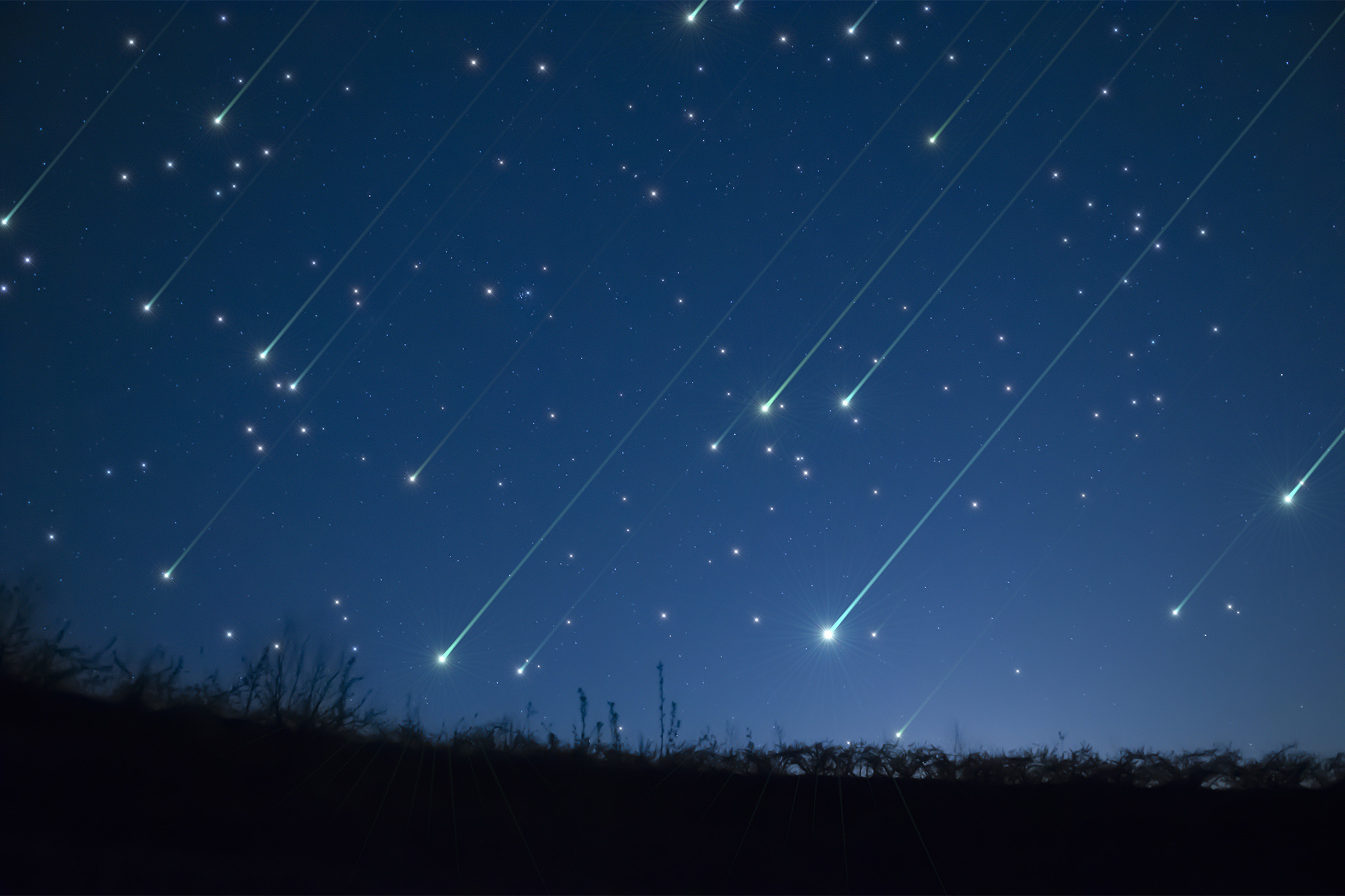ATLANTA, GA — The spring and summer meteor shower season is under way with the Lyrid meteor shower, which will peak overnight on Monday and Tuesday, April 22-23. Atlanta area skywatchers may also see them Sunday night and after the height of the shower. At its peak, the Lyrids will produce between 15 and 20 meteors an hour.The Lyrid meteors are now streaking across the sky and will peak overnight on April 22-23. Right now, the weather forecast for the Atlanta metro calls for clear skies on Sunday night, and mostly clear skies on Monday for the height of the celestial show.
The April 16-25 Lyrid meteor shower typically produces around 20 shooting stars an hour. The full “pink moon” — so named for the pink ground phlox that blooms this month — will still be bright and could be problematic.
More than 300 people saw a possible meteor blazing across the sky over the District of Columbia, northern Virginia, the Carolinas and along the East Coast on the evening of April 16. Videos captured the possible meteor as it zipped over towns and apparently burst into a fireball around 10:57 p.m. on Tuesday.
The American Meteor Society said it received 360 reports about a meteor/fireball seen over Maryland, Washington D.C., Virginia, Delaware, New Jersey, Pennsylvania, and other states. People from the D.C./Maryland region to New York reported seeing a meteor that looked like a bright fireball streaking across the sky.
Meteor seen in Ocean City, Maryland last night. pic.twitter.com/eUm7wD37RI
— DC Maryland Virginia (@DMVFollowers) April 20, 2019
The Lyrid meteor shower is typically one of the most reliable of the year with very bright, fast shooting stars. Meteor experts usually advise skywatchers to look for shooting stars in the early predawn hours, and the Lyrids are typically no exception. But this year, the best time to see the Lyrids is expected to be in the early evening hours before midnight, local time.
Vega, the brightest star in the constellation Lyra, the radiant point for the Lyrids, rises in the northeast sky around 9 or 10 p.m. local time, and reaches its highest point just before dawn. That’s generally when the most meteors are visible, but the moon will be shining brightly around that time, too, and will wash out all but the brightest meteors.
“So try — this year — watching in the early part of the night,” Earthsky.org advises. “There will be a brief window between the time the radiant rises in mid-evening and moonrise around midnight.”
Early evening hours also offer the best chance to see what’s called an “earthgrazer,” an often colorful and slow-moving fireball that streaks horizontally along a path that is nearly parallel to Earth’s atmosphere. Keep your eyes peeled on the horizon for your best chance to see one of these rare meteors.
The Lyrids have a place in history as one of the oldest known meteor showers, with records dating back 2,700 years. In 687 B.C., the ancient Chinese are reported to have observed Lyrid meteors “falling like rain” from the sky. The next recorded meteor storm of that magnitude was in 1803, when newspaper articles across the eastern United States reported falling stars in just about every direction in the sky.
It’s difficult to predict exactly when “outbursts” of more than 100 shooting stars an hour will occur — the last one visible in North America was in 1980 — but NASA meteor expert Bill Cooke doesn’t doesn’t expect an outburst this year.
On average, outbursts occur about every 30 years, but Cooke emphasized that’s only an average.
“People say there is some periodicity there,” Cooke told Space.com, “but the data doesn’t support that.”
The Lyrid meteors are produced by debris from Comet Thatcher, which orbits the sun about once every 416 years — the last time in 1861. The path of the comet’s orbit is nearly perpendicular to the plane of our solar system, and the gravitational pull of the planets keeps the debris from being scattered — a key to its reliability, according to National Geographic.
After the Lyrids, the Eta Aquarids meteor shower tunes up next, peaking overnight May 6-7. This shower typically produces 10 to 30 meteors an hour. They, too, are fast and can produce persistent trains — that is, an ionized gas trail that glows for a few seconds after the meteor has passed.
The Eta Aquarids are produced by dust particles left behind by the comet Halley. The best viewing times are after midnight. The thin crescent moon sets in the early evening, which will make for ideal viewing conditions.
via Patch.com



